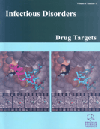
Full text loading...

Streptococcal Toxic Shock Syndrome (STSS) is a life-threatening condition caused by bacterial toxins. The STSS triad encompasses high fever, hypotensive shock, and a “sunburn-like” rash with desquamation. STSS, like Toxic Shock Syndrome (TSS), is a rare complication of streptococcal infections caused by Group A Streptococcus (GAS), Streptococcal pyogenes (S. pyogenes). Staphylococcus aureus is the most frequently isolated bacterial species associated with TSS. Risk factors for STSS include older age, skin wounds, recent viral infection with open sores, recent surgery, nasal packing, use of tampons or other devices, such as menstrual cups/contraceptive sponges/diaphragms, or any other chronic illness, like diabetes or alcohol/drug abuse. Our case presents a patient who did not have any of these risk factors.
A 25-year-old male was admitted to the Intensive Care Unit (ICU) after requiring intubation with mechanical ventilation and pressor support in the setting of septic shock. Septic arthritis was suspected, and blood and bone cultures were positive for S. pyogenes. Arthrocentesis of the affected knee (with fluid analysis and cytology) was positive for Streptococcal pyogenes. Infectious disease was consulted and the patient was empirically started on antibiotics. Kidney function continued to worsen, requiring hemodialysis. He no longer demonstrated brainstem reflexes, which prompted neurology consultation to rule out central nervous system dissemination.
Superantigens are pyrogenic exotoxins secreted by different strains of S. pyogenes and are responsible for the many symptoms of STSS that patients present with. Throat infections by the bacteria, leading to streptococcal pharyngitis, are mediated by toxin release and known to cause scarlet fever and, very rarely, STSS. The post-infectious non-pyogenic, non-suppurative syndromes of GAS are autoimmune in nature, which include rheumatic fever, acute glomerulonephritis, and very rarely, reactive arthritis. This cross-reactivity of antibodies with body tissue via a mechanism of molecular mimicry can follow streptococcal infections, like streptococcal pharyngitis. Renal disease can also occur after a localized skin infection, also known as streptococcal impetigo.
Despite the relationship of STSS with throat infections, there seem to be no reported cases of STSS secondary to septic arthritis in adult patients with no pertinent past medical history or other risk factors that could contribute to the condition.
Streptococcal septic arthritis is an uncommon orthopedic emergency with high morbidity and mortality that requires emergent medical management. Septic arthritis needs to be treated with systemic antibiotics and joint aspiration, also known as arthrocentesis, which may be required more than once for complete recovery and avoidance of joint destruction. STSS is a very rare complication of streptococcal septic arthritis and monitoring of organ failure and hemodynamic instability is paramount for patient’s management and survival.